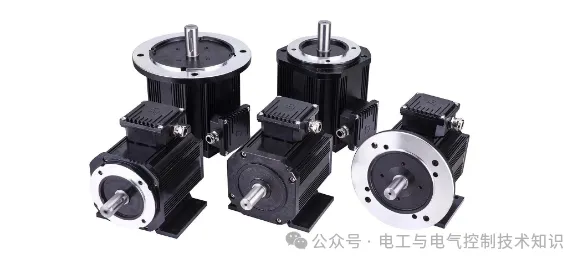What are the excitation methods of DC motors? What are their characteristics?
There are three main excitation methods for DC motors: separate excitation, parallel excitation and series excitation. The following will introduce the characteristics and applications of these three excitation methods in detail.

1. He encourages
Separate excitation, also known as external excitation, means that the excitation power supply of the DC motor is separated from the armature power supply of the motor, and the excitation current is provided externally. Separate excitation has the following characteristics:
1.1 The excitation current is independent of the armature current : The excitation current of the separately excited method is independent of the armature current. The excitation current can be adjusted as needed to change the magnetic field strength of the motor.
1.2 Wide speed regulation range: Since the excitation current can be adjusted independently, the separately excited DC motor has a wider speed regulation range and can achieve stepless speed regulation.
1.3 Large starting torque: The separately excited DC motor can provide a large starting torque when starting, and is suitable for occasions that require a large starting torque.
1.4 Low power factor : Since the excitation current is independent of the armature current, the separately excited DC motor has a low power factor and requires a larger excitation current to generate the required magnetic field.
1.5 Application areas: Separately excited DC motors are widely used in situations that require a wide speed regulation range and large starting torque, such as rolling mills, cranes, etc.
2. Encourage
Shunt excitation, also known as self-excitation, means that the excitation power supply of the DC motor is connected in parallel with the armature power supply, and the excitation current is provided by the armature current. The shunt excitation method has the following characteristics:
2.1 The excitation current is related to the armature current: The excitation current of the shunt excitation method is related to the armature current, and the excitation current changes with the change of the armature current.
2.2 The speed regulation range is small: Since the excitation current is related to the armature current, when the armature current decreases, the excitation current will also decrease, resulting in a decrease in the magnetic field strength and an increase in the motor speed. Therefore, the speed regulation range of the shunt-excited DC motor is small.
2.3 Small starting torque: When starting, the excitation current of a shunt-excited DC motor is small and the magnetic field strength is low, so the starting torque is small.
2.4 High power factor: Since the excitation current is provided by the armature current, the excitation current and the armature current have the same phase, so the power factor of the shunt-excited DC motor is high.
2.5 Application areas: Shunt-excited DC motors are widely used in situations where the speed regulation range is not high and the starting torque requirements are small, such as small DC motors, household appliances, etc.
3. Series excitation
Series excitation, also known as compound excitation, refers to the DC motor's excitation power supply and armature power supply being connected in series, and the excitation current is the same as the armature current. The series excitation method has the following characteristics:
3.1 The excitation current is the same as the armature current: The excitation current of the series excitation method is the same as the armature current, and the excitation current changes with the change of the armature current.
3.2 Better speed regulation performance: When the armature current of a series-excited DC motor changes, the excitation current will also change accordingly, thereby changing the magnetic field strength and achieving speed regulation.
3.3 Large starting torque: When starting, the series-excited DC motor has a large excitation current and a high magnetic field strength, so the starting torque is large.
3.4 High power factor: Since the field current is the same as the armature current and the field current and the armature current are in phase, the power factor of the series-excited DC motor is high.
3.5 Application areas: Series-excited DC motors are widely used in situations that require good speed regulation performance and large starting torque, such as electric vehicles, power tools, etc.
Summarize:
There are three main excitation methods for DC motors: separately excited, parallel excited, and series excited. The separately excited method has the characteristics of a wide speed regulation range and large starting torque, but a low power factor; the parallel excited method has the characteristics of a high power factor and a small speed regulation range, and is suitable for occasions where the speed regulation range is not required; the series excited method has the characteristics of good speed regulation performance and large starting torque, and is suitable for occasions that require good speed regulation performance and large starting torque. When choosing the excitation method for a DC motor, it is necessary to select according to the specific application needs and performance requirements.



























 XINDA
XINDA